The Article
Gravity One From Origin Live
20th August 2020

Looking to removing noise and vibration from your turntable’s platter and the record itself, Origin Live introduce an intriguing accessory called the Gravity One
Before we get to the thing itself, let me tell you what this product is not.
It’s not a Weight. It’s not a Record Weight. It’s not a stabiliser. It’s not a clamp.
Even Origin Live calls this thing a Record Weight. It isn’t.
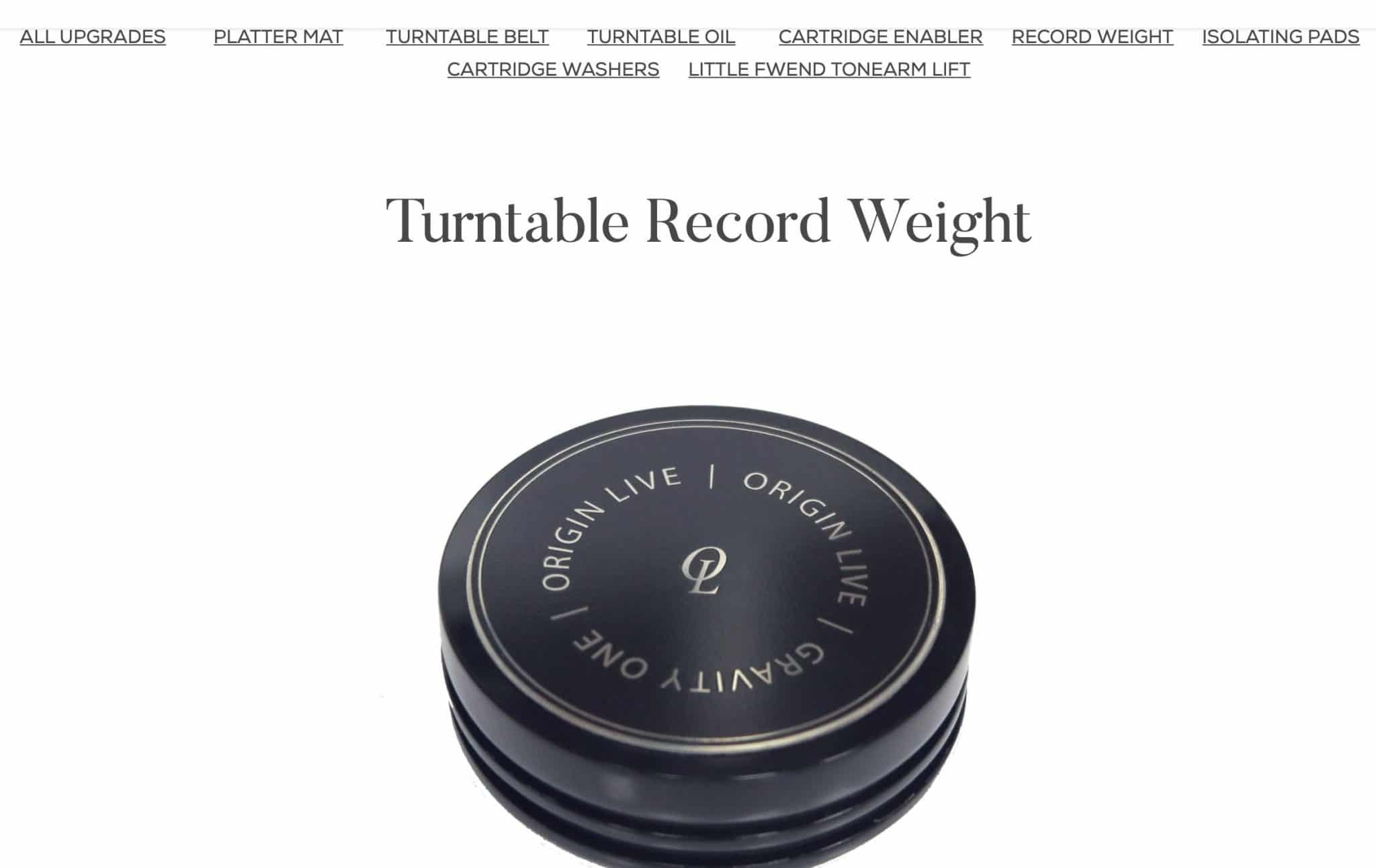
Calling this product a Record Weight doesn’t describe what this accessory does or how it does it. It’s a name that will be familiar to the beginner or the wary and may help Origin Live’s Google Analytics but that’s it.
It has weight sure, otherwise it would float out of the window but so little that it doesn’t perform like a classic Stabiliser.
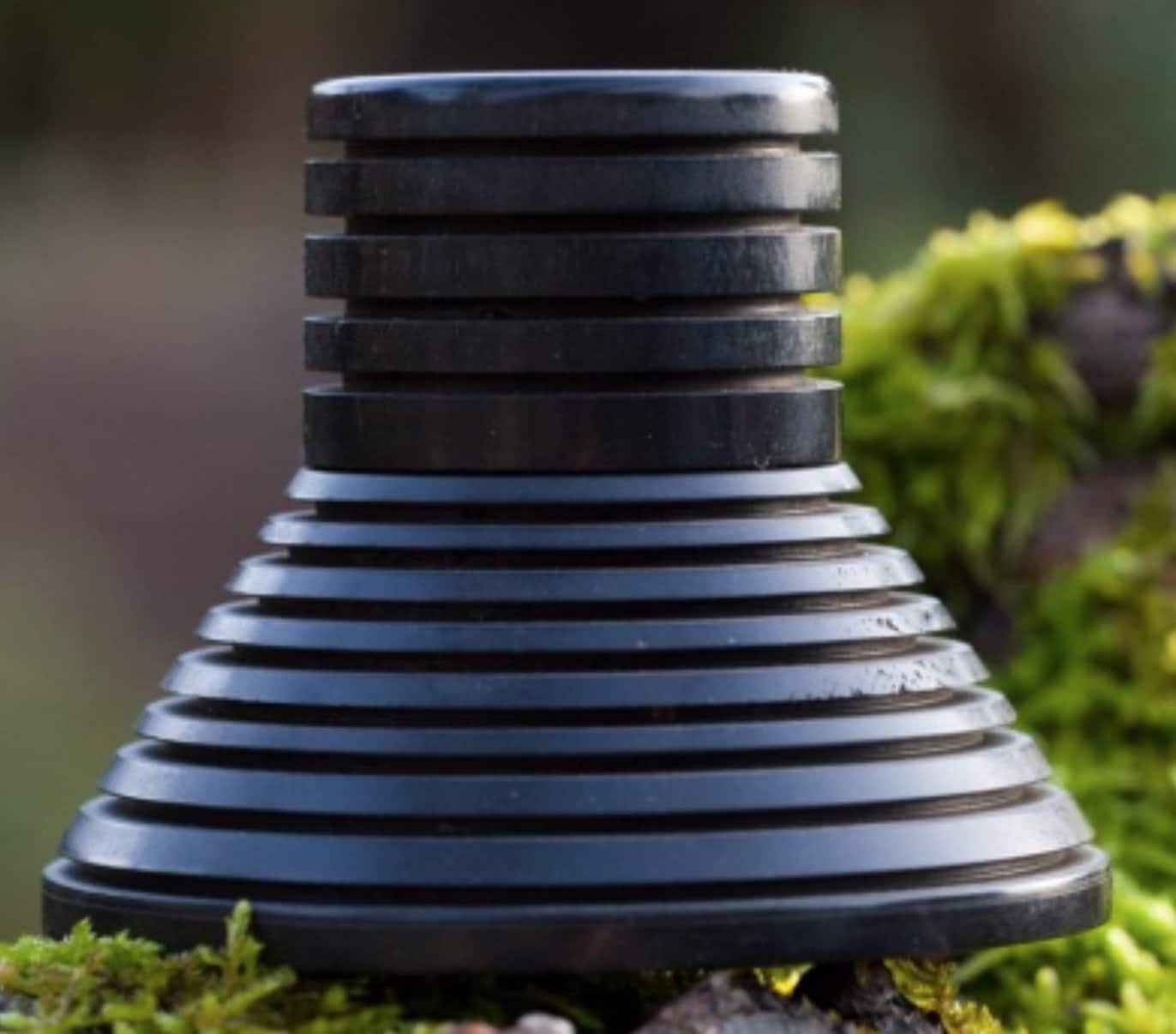
In fact, the Gravity One – its real name – is the result of inspiration. It’s inspired by the Shun Mook. Described as a “record clamp”, the Shun Mook is made from Ebony root. Not Ebony. Ebony root. It currently sells in the UK and elsewhere for an eye-watering £3,750.
The guys at Origin Live were hanging round their room at a relatively recent hi-fi show and this piece of Japanese exotica was nearby. So they took a little look, light bulbs flashed above heads, the thought of doing an affordable version was discussed and behold, the Gravity One was born.
Something like that, anyway.
The idea behind the Gravity One is that this unit is all about ridding the platter and record of noise and vibration. Records hold vibrations too, you know. Not just the platter. Vibration is fine and useful if treated properly. That is, if you encourage the vibration to peter out to zero, then vibration is OK. Vibration is also useful, to an extent, because it holds the spacious, reverb-like bits of music.
Some vibration is good, too much is not so good because it turns into high-frequency noise. It’s a bit like damping your room. You want to damp it just enough to remove damaging echoes and harmful bouncing frequencies, dead spaces and the like but too much kills the sound stone dead and the music sounds like its performing in a padded cell.
Like every other part of a turntable, it’s a balancing act. Get that balance right and you’re onto a winner. Get it wrong and the turntable will either sound dull or bright.
That’s why the Gravity One is unstable in nature. I mean physically. It’s a bit…wobbly. It encourages vibration to be targeted, then reduced and to fizzle out, lowering the overall noise floor.
This is also why the Gravity One isn’t heavy. Too heavy a weight will kill dynamics. I’ve tested that effect many times myself on various Stabilisers on different turntable designs.
Also, the issue with many clamps, those that hug the spindle, is that they couple themselves directly to the vibration from the bearing below. Which then spreads to the platter and the record.
The actual construction method of the Gravity One is on the restricted list. Origin Live is keeping schtum but there’s some Cartridge Enabler-like material within, low-density wood, there’s some acrylic screws and those screws are not tightened too much. There’s ‘give’ in there.
As I say, the actual Gravity One is not solid during use. If you firmly hold the top bit, you can twist the bottom bit a tad. Hence, the Gravity One also seems to be built from discs of a sort.
So that’s what it is and how it is but what does it sound like?
SOUND QUALITY
I started with Joe Harnell and his LP, Moving On!! Unusual because it resides on the Motown label. This is an easy-going, big band presentation full of organic instruments.
I first placed the Gravity One onto my high-end Origin Live Sovereign turntable to see how a top-of-the-range deck reacted.
The response was quite remarkable. Why? Well, my principle reference set up is – even though I say so myself – finely tuned with main components and ancillaries. I’ve spent serious time tweaking and adjusting my hi-fi to a point in which the system runs, I have to say, quite beautifully.
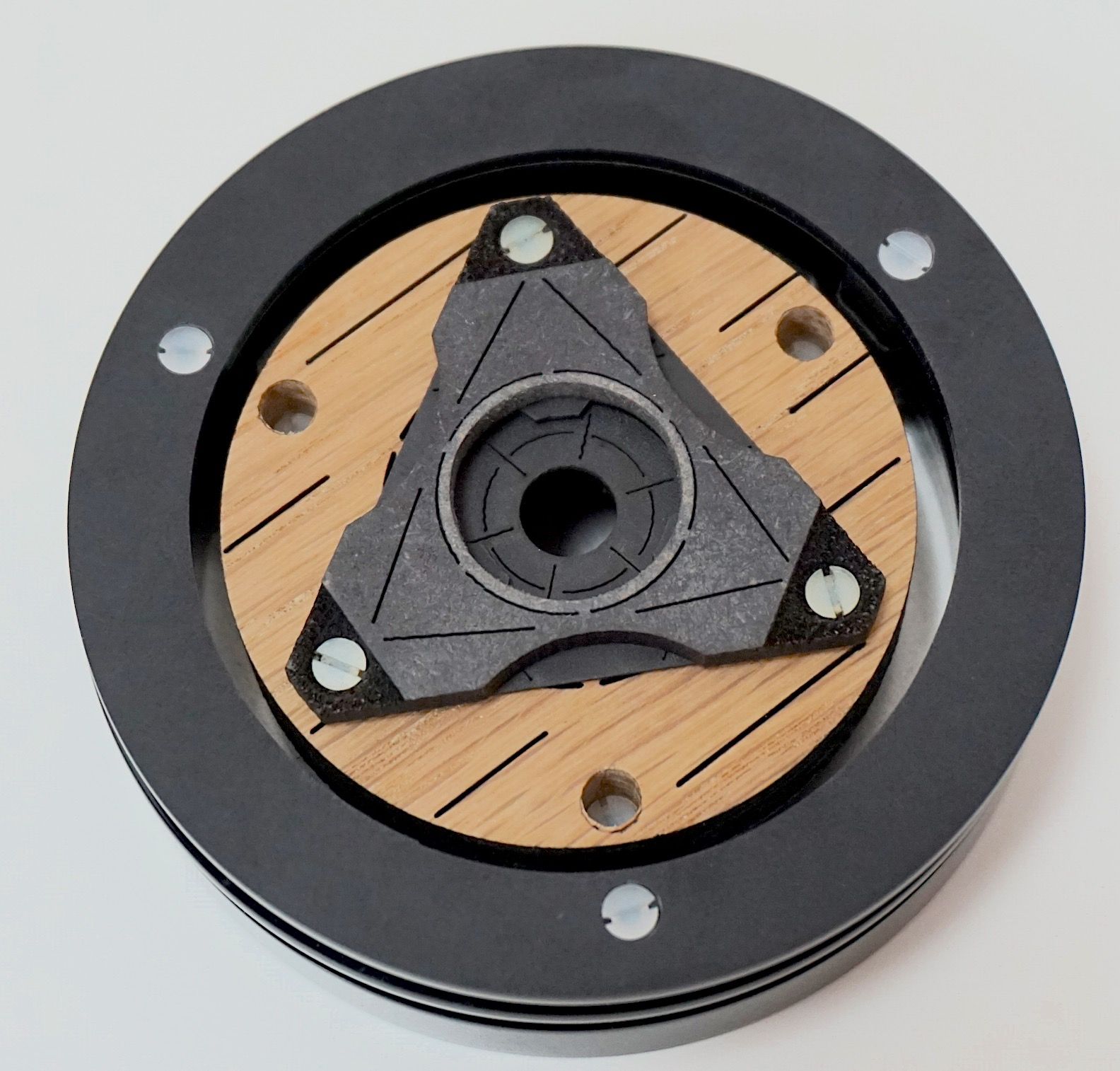
Then I added this Gravity One and the the sound improved. Just like that. Just to prove that, no matter how well I think your system is doing, there’s always something else out there that can improve matters. Accessories like this Gravity One never fail to amaze me.
So what’s happening sonically here? It’s all about control, really. Basically, if there are any and I mean any frequencies that are misbehaving and that includes those frequencies that are even slightly out of line, this accessory will correct the error. It will re-focus upper mids, it will add a tad more weight to the bass, it will de-noise the treble, adding clarity.
It had me throwing up my hands in exasperation, to be honest. In a pleasant way, I have to add. I was smiling when I did it but hey, there I was. Smug. And then this thing comes along and says, “OK, buster, just step to one side and let me show you a thing or two.”
So the prominent secondary percussion tambourine stepped back a tad from the sonic edge, where it normally lives and added both clarity but more detail to its presentation, bass sounded fuller and added a reverb tail and the piano provided more resonance.
I then shifted to Roxy Music’s Avalon, a very well produced LP offering balanced neutrality. Again, I thought that this LP was sorted in sonic terms. It sounded great as it was. Again, there were changes. Good ones. Now it sounded even better.
It’s interesting. The Gravity One removed any little areas of bass bloom here, midrange smearing there. Little errors. Lots of little errors were corrected. Errors that I didn’t even notice were there until they were gone. Not major problems. Not here, with my Sovereign, at any rate.
Yet the Gravity One tidied all of these things up so you suddenly found lots of little details popping out of the woodwork. A vocal reverb that wasn’t there before. Brief but noticeable. A new and quick cymbal tap or two, just a second’s worth but enough to catch the ear. A slight extra decay on a guitar string. Nothing major but something to raise an eyebrow…and on and on. Lots of little things appeared. I repeat – all of this from a system I had spent a long time tweaking to, ahem, “perfection”.
Then I added all of these things up and found a couple of dozen of new additions that, when taken all together, suddenly changed the entire presentation of the music. And for the better.
I wanted to try the Gravity One on a turntable and system that had not received too much ancillary attention and where sonic issues were in abundance. One that had not been tweaked to the same level as my high-end system. Just to see what, if any, effects it might have.
While I was there I also decided to switch technologies, away from my Sovereign’s belt-drive system.
So I plumped for budget and direct drive and tested the Gravity One on an AT-LP140XP turntable playing the same track but with an upgraded cartridge from the default norm, the Audio-Technica VM-95E.
I chose this turntable because, although it’s an admirable performer, the DJ furniture adds high-frequency noise which masks detail.
Now yes, in relative terms, this is an expensive accessory and one that you might not purchase for this particular turntable but look, if it works well on the Sovereign (one end of the price spectrum) and then on the 140 (the other end of the price spectrum), then it should work well on anything in the middle priced at £700 or £1,500 or £3,000 or whatever. See it in those terms.
And did it? Oh, yes. The Gravity One opened up the upper frequencies, infusing the soundstage with far more information. Before, in relative terms, the 140 sounded rather dull in its presentation, adding the Gravity One gave it new life and pizazz, giving the backing harmonies precision, lowering the noise floor as a whole and providing new air to the soundstage. Bass too was improved. It emerged from the soundstage with more character instead of the earlier tonal smudge it was offering. In short, the Gravity One transformed the turntable.
CONCLUSION
If ever there was a misnomer for a hi-fi accessory it’s this one from Origin Live. The very lightweight Record Weight does no stabilising at all, unlike others of its ilk. Instead the Gravity One is all about noise reduction, adding discipline to all frequencies, opening up the soundstage, infusing it with air, detail and clarity. As I say, I thought my own hi-fi had reached a state of perfection. Perfection in its price range maybe, but within those limits yes, perfection. Then the Origin Live Gravity One toddled along and proved me wrong. I was very happy to be put in my place by this little accessory. And no, Origin Live, you can’t have it back. Now I’ve heard what this thing does…
ORIGIN LIVE GRAVITY ONE
Price: £195
Website: www.originlive.com
GOOD: focused midrange, low noise performance, disciplined frequencies, detail, organic bass
BAD: nothing
RATING: 9
[Don’t forget to check out my new Patreon Page at www.patreon.com/audiophileman, for exclusive postings, giveaways and more!]
REFERENCE
Origin Live Sovereign turntable
Origin Live Enterprise 12″ arm
Icon PS3 phono amplifier
Aesthetix Calypso pre-amp
Icon Audio MB845 Mk.II Monoblock Amplifiers
Quad ESL-57 Speakers with One Thing mod
Audio-Technica AT-LP140XP turntable
Blue Horizon Professional Rack System
Harmonic Resolution Systems Noise Reduction Components
Gutwire Consummate Grounding Cable
Air Audio AC-2K Balanced Transformer
All vinyl was cleaned using an Audio Desk’s Ultrasonic Pro Vinyl Cleaner

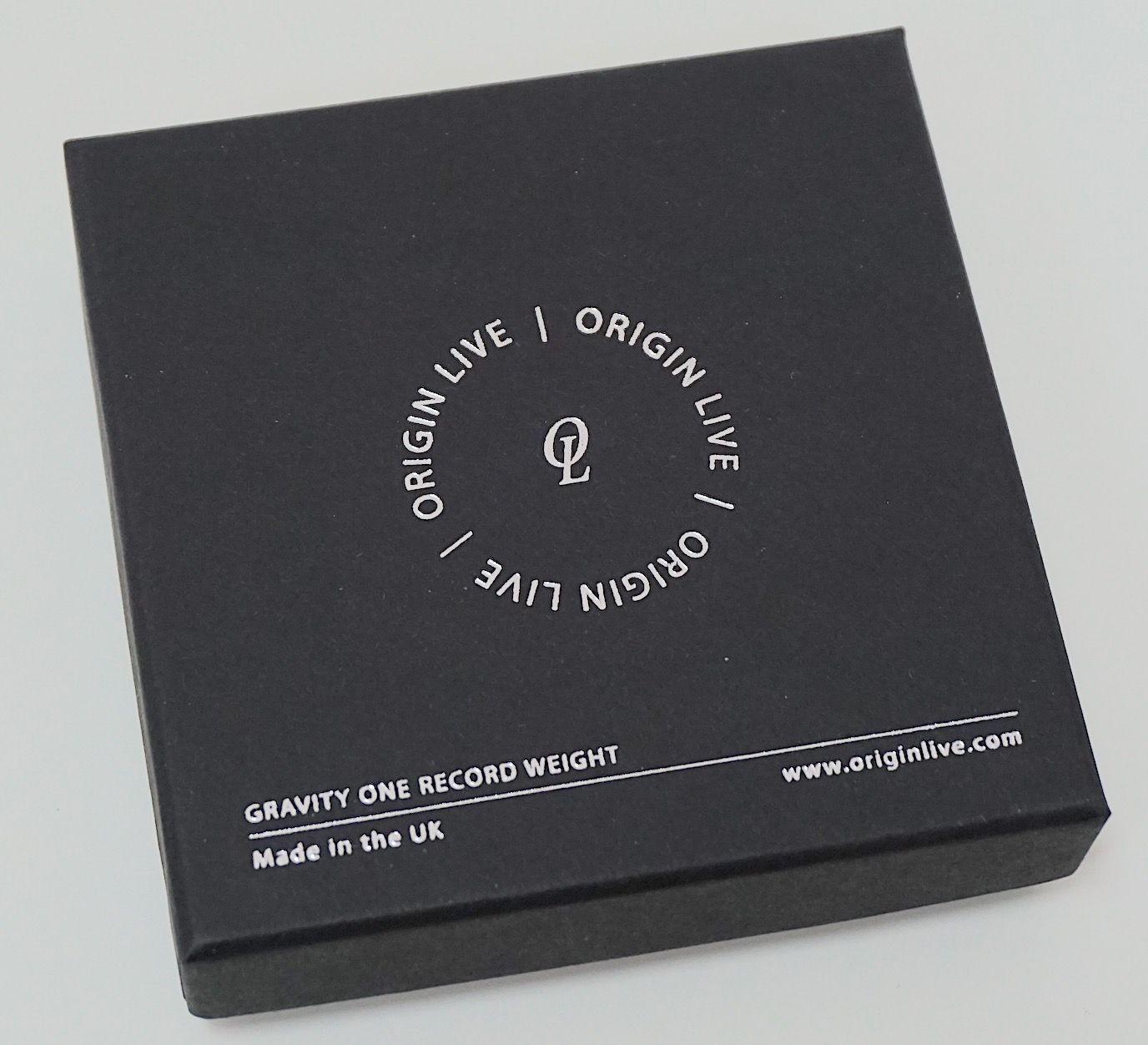
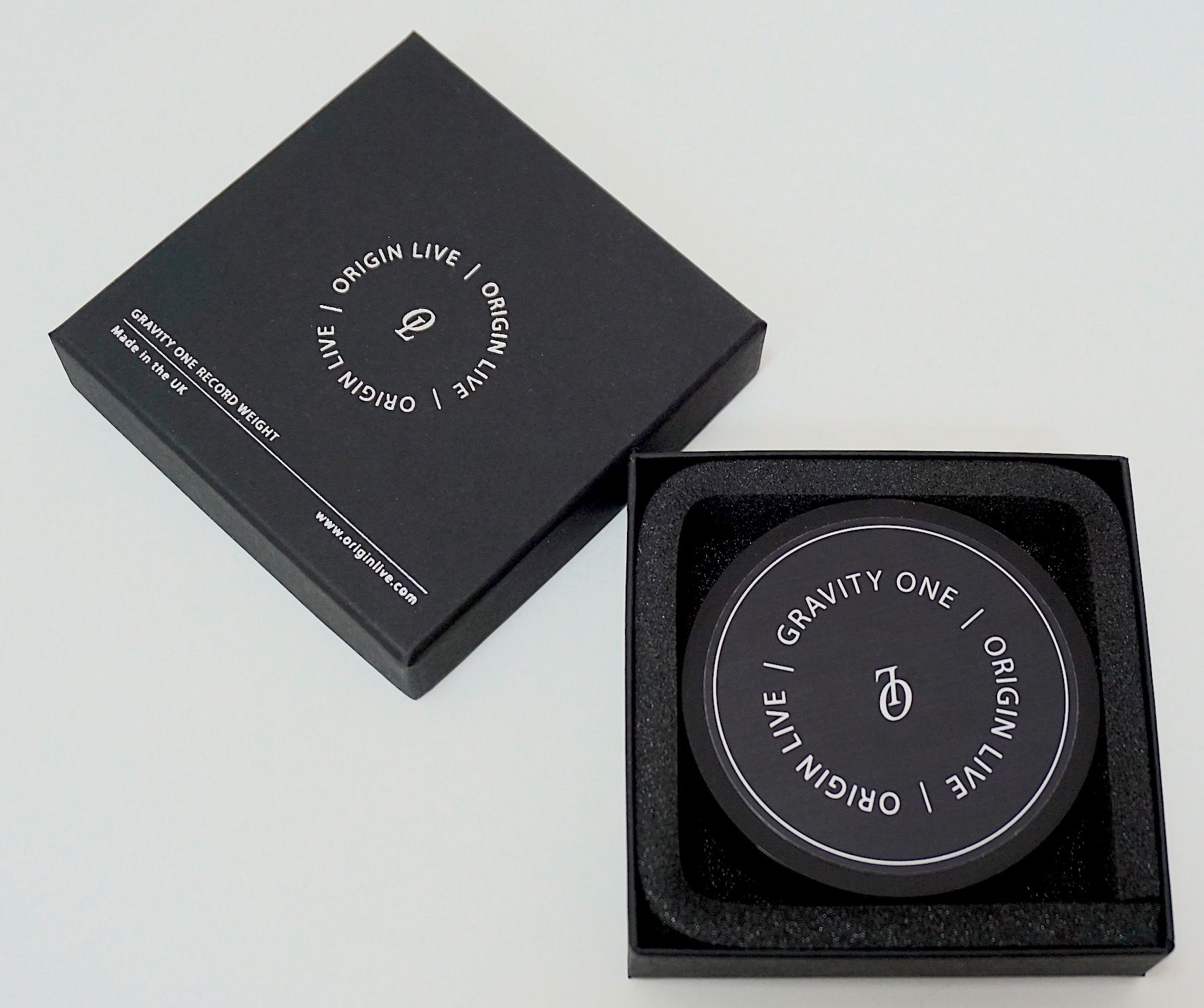
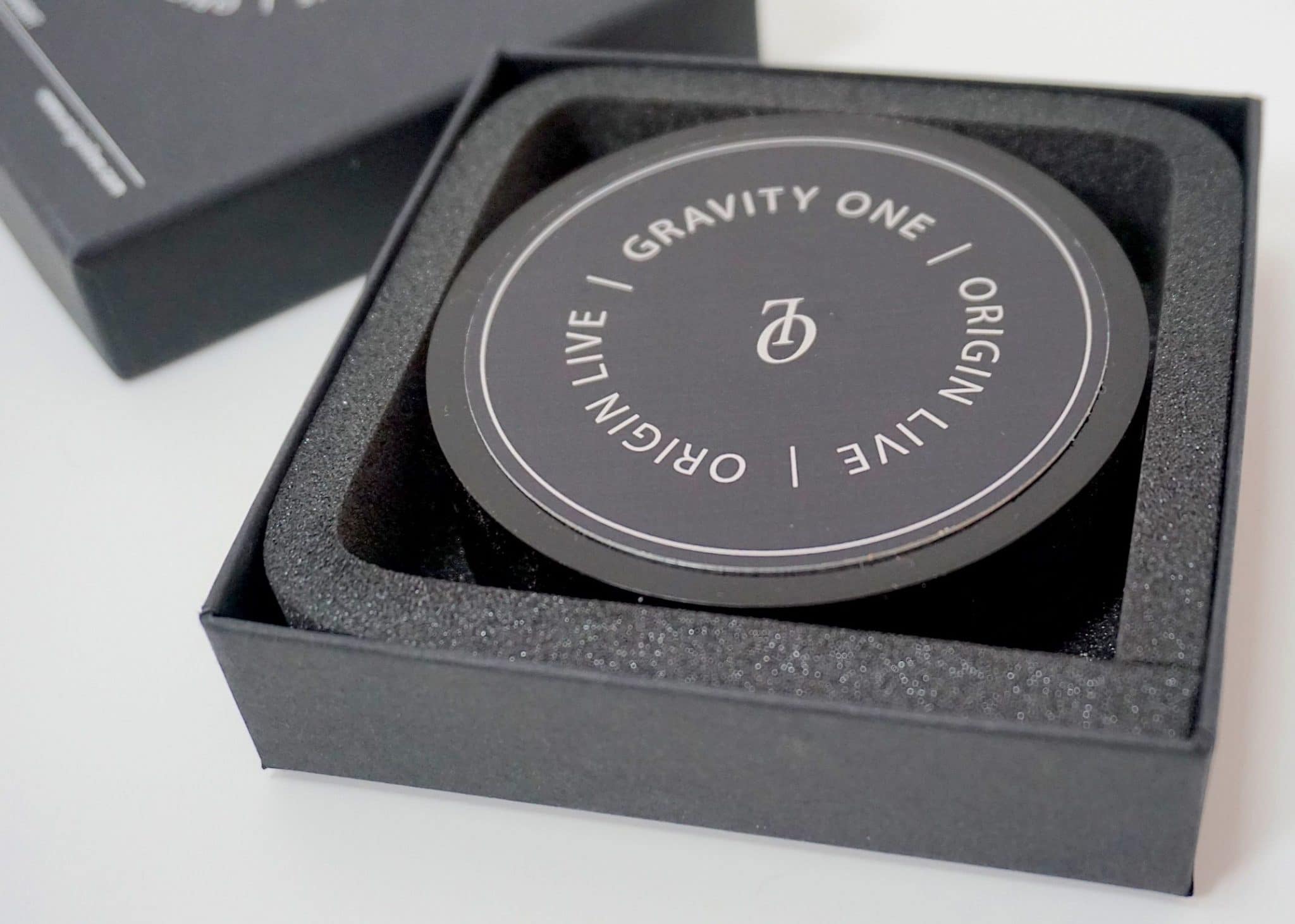
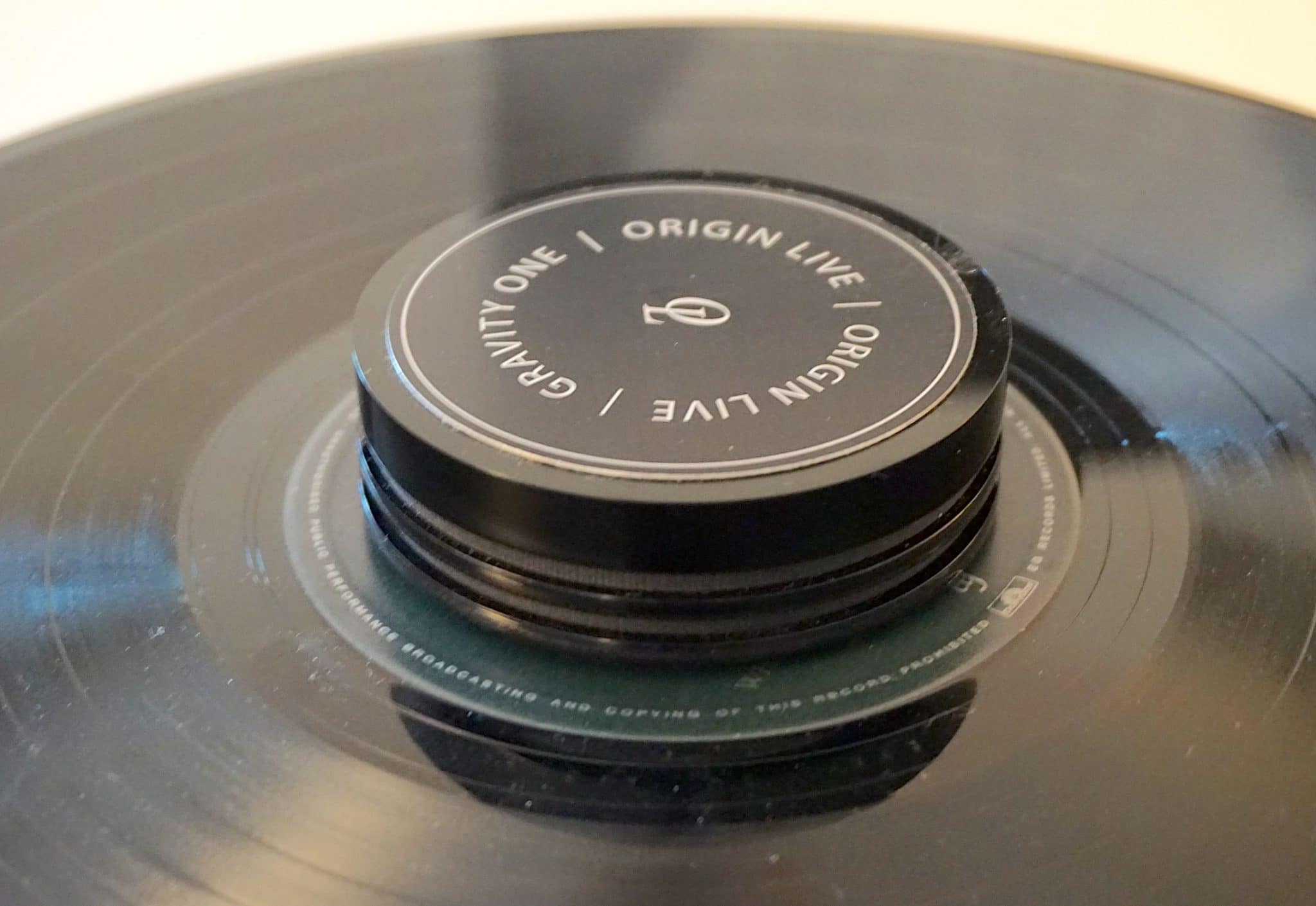
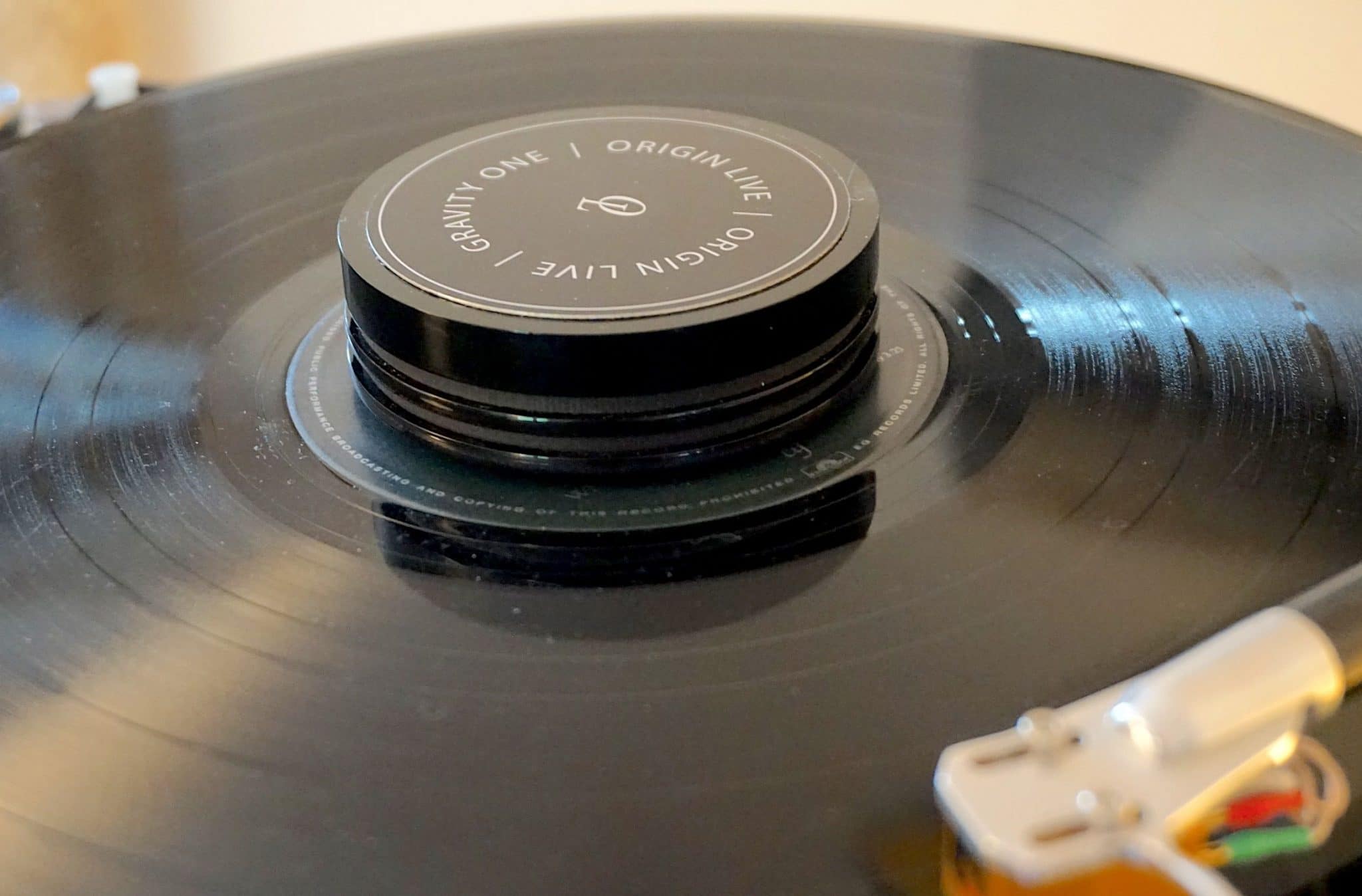
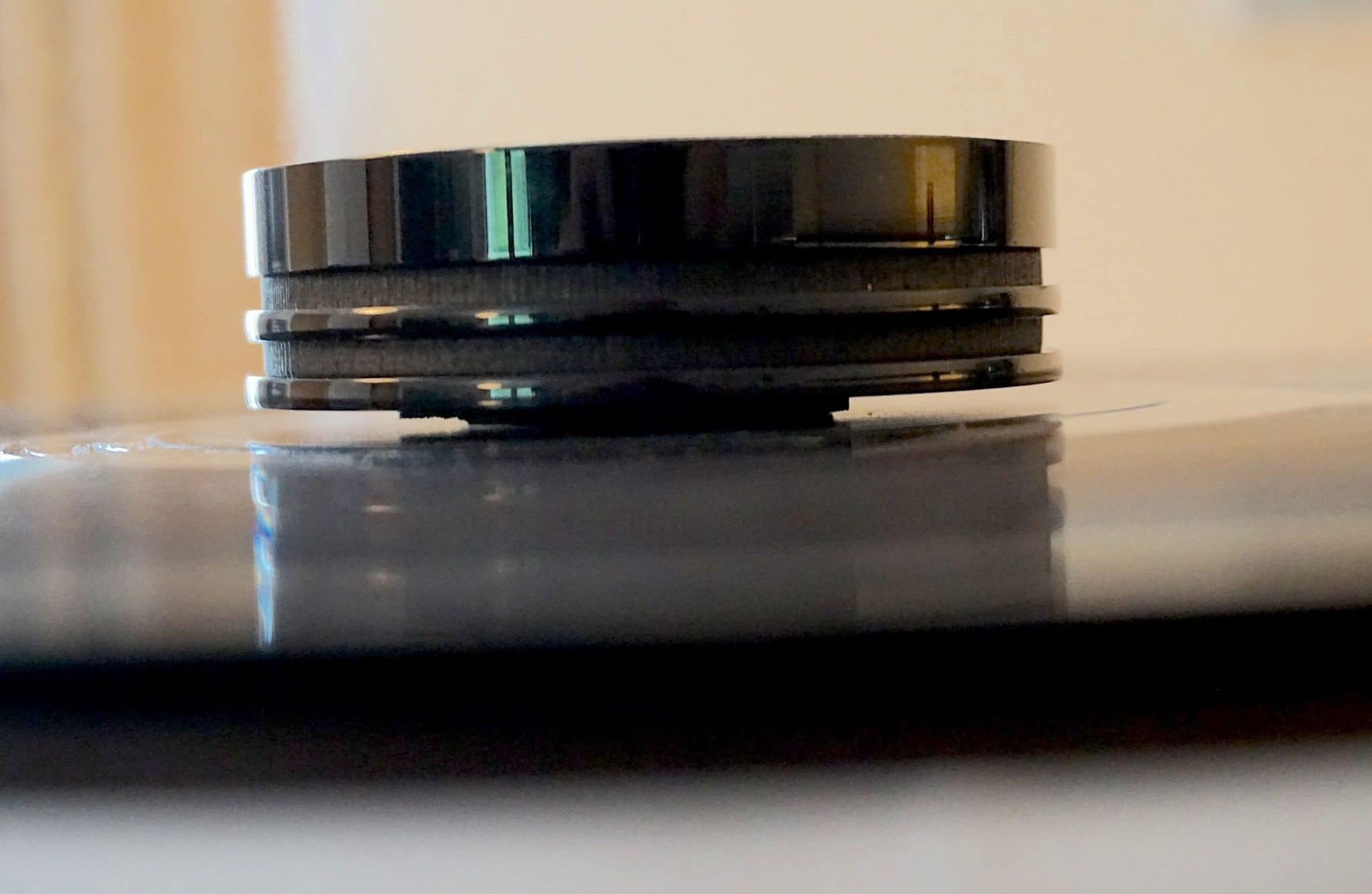
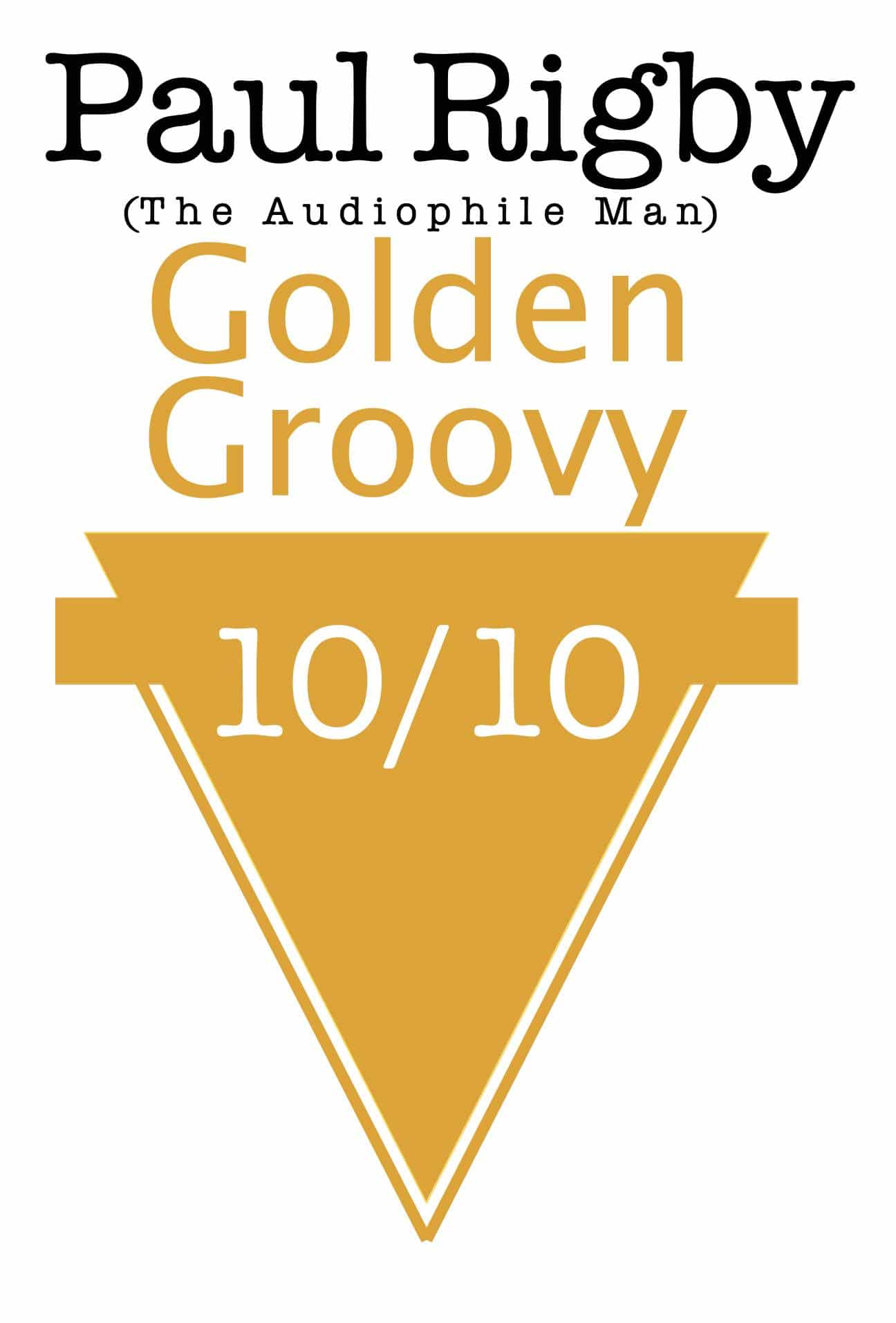


Do you think this would be appropriate for use on a Rega RP10. Rega suggest no weights to protect the bearing, but I notice this thing only weighs 70g, so I‚Äôm tempted to give it a go…
Also, did you try it on the hexmat? Do they play nicely together??
Indeed yes, Mark – there is no weight from the Gravity One. None that you’d notice, as you say. I did try it with the Hexmat. It worked well and I even noticed improvements with the mat in place 🙂
Thanks, Paul. Order placed!
Works great on my P10!
Substantial improvement across the board.
Hi Paul, would this be suitable on a clamping system, like my Michell Orbe, and, if so, would you expect an improvement in noise reduction? Regards, Wayne
I haven’t tried the Gravity One with the Orbe but I would give the idea a thumbs up, yes.
Thanks Paul, I can see where clamping is not ideal, with the record, clamp, platter and main bearing all contacting to some extent. I’ve now purchased the OLG1 for use with my Orbe, and I’m expecting positive results.
Hi Paul,
really appreciate your honest reviews. I purchased the cartridge enabler, because of your review. It did make a difference on my michell gyrodec. I have just purchased the gravity one, because of your great review.
Once again really appreciate your reviews.
Thanks Steve
Not a problem and thanks for your kind words, Steve.
Thanks for the review. How does this product compare to the HRS centre weights – ADL and ADH?
I prefer the Gravity One. The HRS remains an excellent product but the Gravity One takes over where the HRS leaves off and moves the sound quality up from there. There’s less damping and more air/space in the mids plus organic bass to boot.
Simple question: I currently use a 5mm Achromat on my AnalogueWorks One turntable. With a record in situ the platter spindle only pokes out a few mm. Looking at the underside of the Gravity One I cannot see the hole making contact with the spindle due to it being recessed. Is this a problem? I’d say, hopefully, no, as the hole seems to be oversized anyway and is not meant to make contact (as per your review above). Am I right?
Also my turntable is a low torque type as is typical for Fletcher designed turntables ie it needs to be hand spun to get it to spin. Again I’m hoping this Gravity One is light enough not to cause problems. What do you think Paul?
Terrific review as always…..but you’re a bad, bad influence üòâ
Sorry Dermot 🙂 The spindle, from what I can see here, is more of a locator than anything else and the work done is applied partly to the record but also the platter. I’m sure the spindle/bearing area benefits too but this is not a clamp so you don’t need lots of physical area here.
Also, the Gravity One is very light and won’t affect the running of your turntable at all. Hope that helps.
Thanks Paul!
Hi Paul – as usual a great review.
I have a much loved 1970s TD160 which I am constantly tweaking. Would this work well on a suspended deck (I assume the lightness would make it preferable to a normal weight / clamp)?
Neil
Yes, I was about to say half way through reading your comment that the Gravity One would suite your turntable because its so light 🙂
Brilliant! I bought one having read your review initially (and because of OL’s general high reputation and the integrity of their business model). Ordered it on their site, it was delivered the next day. It does what it claims to do, used with my VPI Scout. In a way it is a subtle difference, but then again it isn’t. I would compare it to a significant cartridge upgrade, or deck upgrade. In the end, I’m just enjoying my LPs more with the G1 in place. A fascinating device, hats off to OL!
Thanks for your thoughts Alex.
Very nuce review Paul
I bought the origin live mat and also the Origin Live gravity one., based on your YouTube reviews.
I am very happy with both üòä
Thanks a lot …
May I ask one more question ?
I still am upgrade sick… I thought to replace my Exact cartridge with Ania Pro. Will it be a smart move?
My turntable is Rega P3 and my phono stage is Chord Huei.
Glad I could be go help – I haven’t reviewed the Ania Pro but colleagues tell me it’s very nice. Are you able to give it a demo?
What about Ania?
Did you review it and can compare to Exact?
As I say, I haven’t reviewed the Ania Pro so can’t comment on their relative performances but I’ve heard good things. From what I also hear, it’s superior to the Exact, if that helps…